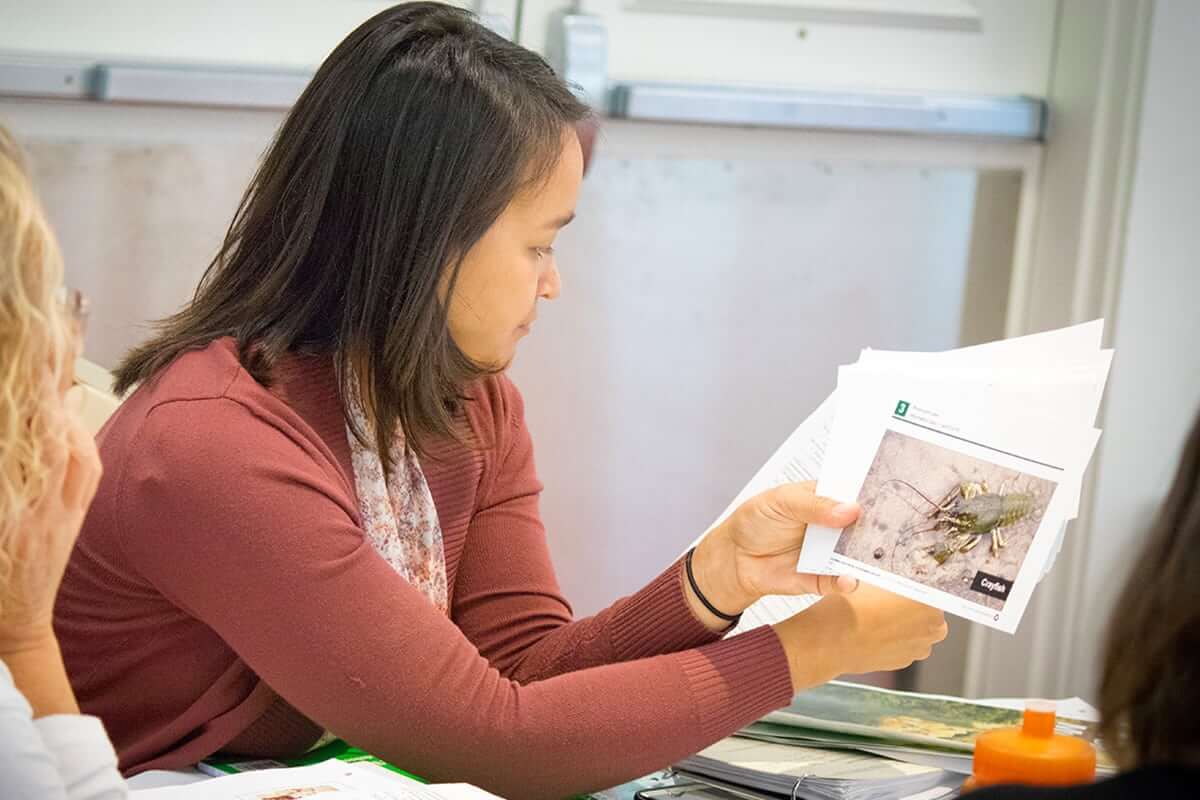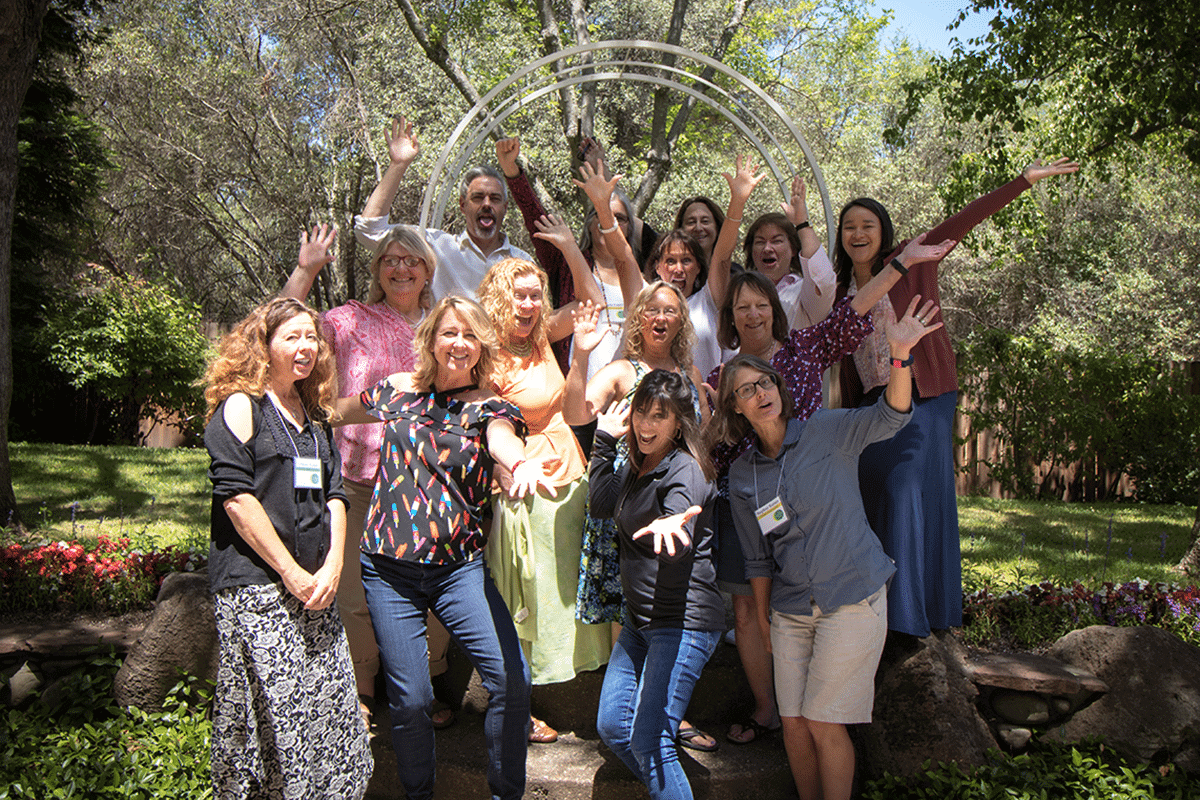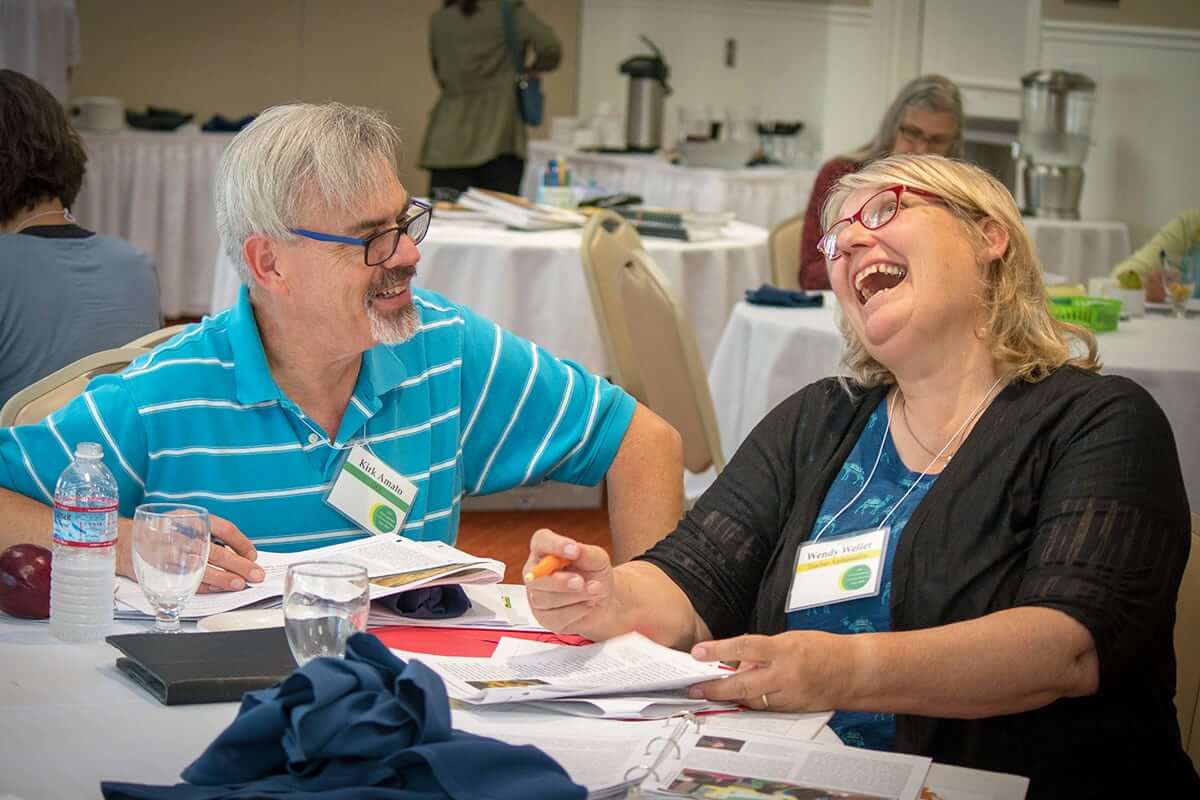I am a proud new member of the elite Teacher Ambassador team for the California Education and the Environment Initiative (EEI), a statewide program to make environmental literacy an integral part of K–12 instruction. A major part of the initiative is the model EEI Curriculum – a free curriculum resource which uses the environment as a context to help students learn science and history–social science.
On a sunny June day, I flew into Sacramento excited to be around educators who are passionate about the environment, and intimidated that I would be presenting about history–social science (HSS) and California’s Environmental Principles and Concepts (EP&Cs) to a bunch of science folks. Unknown to many science folks (or elementary teachers, as HSS professional development is rarely offered), the EP&Cs are also in the new History–Social Science Framework, Appendix G.
I had the honor of demonstrating how I use the EEI Curriculum as an HSS curriculum resource to implement the new pedagogy of the HSS Framework through the lens of California’s EP&Cs “developed by more than 100 scientists and technical experts. The EP&Cs examine the interdependence of human societies and natural systems, and are the foundation of the model Education and the Environment Initiative Curriculum.”
I shared an approach that I have students take with the “California Connections” articles at the start of each EEI Curriculum unit. Reading “From Grapevines to Theme Parks” from the 4th grade Cultivating California HSS unit, the teacher ambassadors practiced Common Core Standard RH 2, finding central ideas and summarizing the source, with the help of this graphic organizer, demonstrating how fun and easy HSS and Common Core are through EEI Curriculum lessons.
The teachers highlighted in the picture below show how EEI Curriculum units can be used to facilitate student-led conversations, and even share a laugh, around a topic of historical significance, which in this case was an article about how Anaheim evolved from a grape-growing region into a theme park haven. Who knew HSS could also be so fun!? I really enjoyed the level of engagement and the amazing ideas that came from my EEI colleagues.
A highlight of the Institute was the evening out hosted by Ten Strands. I have been to many multi-day institutes where I am hard-pressed to find a dinner partner and then confined to my hotel room or left to explore on my own after a long, often exhausting day. Our evening at Folsom’s Chicago Fire enabled the teacher ambassadors to connect over a delicious meal and develop relationships that will help us improve the resources and expertise we share with teachers who attend an EEI Curriculum training. Did I also mention it was my first time sleeping away from my 16-month old? So that helped to enliven the experience!
On day two of the Institute, I switched to “student mode” as Barbara Woods, a science leader from Galt Unified, demonstrated strategies for aligning the EEI Curriculum science units to Next Generation Science Standards (NGSS). This was interesting for me as I know very little about NGSS, since I come from an HSS background. During our exploration of the NGSS and EEI Curriculum units, many of us were connecting the two disciplines of HSS and science. There are so many fantastic opportunities for cross-curricular work, which is terrific for elementary teachers, but more and more, as education shifts to project-based learning, environment-based education, the EEI units, and the EP&Cs become a common thread for launching student agency across all disciplines.
 I’m based out of San Diego and a perfect example of this work occurs through the EEI Curriculum Grade 11 HSS unit The United States and Mexico: Working Together. Using the Tijuana River Estuary as a case study for how decisions affecting resources and natural systems are complex and involve many factors (Environmental Principle V), students can examine multiple perspectives of people living on both sides of the border and explore solutions for the state of the Tijuana River. In addition, Border Field State Park, located within the Tijuana River National Estuarine Research Reserve, offers free field trips and transportation grants to local Title I schools, giving teachers and students a chance to explore firsthand the intersection of HSS and science as they see the border in person, visit WWII bunkers, and test the chemistry of the water collected in the basin of the estuary. This is just one of many ways to let students explore using an EEI Curriculum unit and the coinciding EP&Cs to launch a project they are interested in so they can become agents of positive change.
I’m based out of San Diego and a perfect example of this work occurs through the EEI Curriculum Grade 11 HSS unit The United States and Mexico: Working Together. Using the Tijuana River Estuary as a case study for how decisions affecting resources and natural systems are complex and involve many factors (Environmental Principle V), students can examine multiple perspectives of people living on both sides of the border and explore solutions for the state of the Tijuana River. In addition, Border Field State Park, located within the Tijuana River National Estuarine Research Reserve, offers free field trips and transportation grants to local Title I schools, giving teachers and students a chance to explore firsthand the intersection of HSS and science as they see the border in person, visit WWII bunkers, and test the chemistry of the water collected in the basin of the estuary. This is just one of many ways to let students explore using an EEI Curriculum unit and the coinciding EP&Cs to launch a project they are interested in so they can become agents of positive change.
It was fun to share and hear ideas from K–12 teachers at the 2018 EEI Environmental Literacy Institute. Environment-based learning is a great way to teach and learn about history–social science and science.



